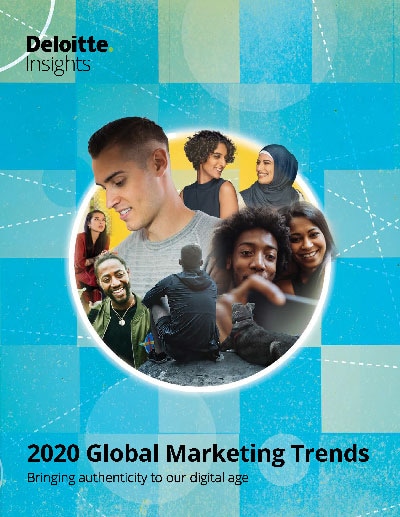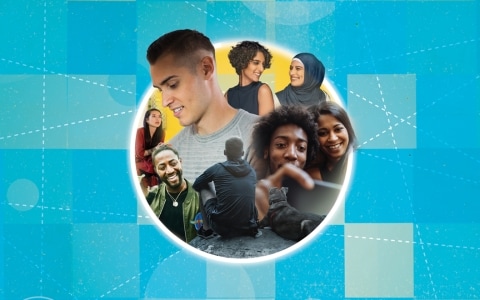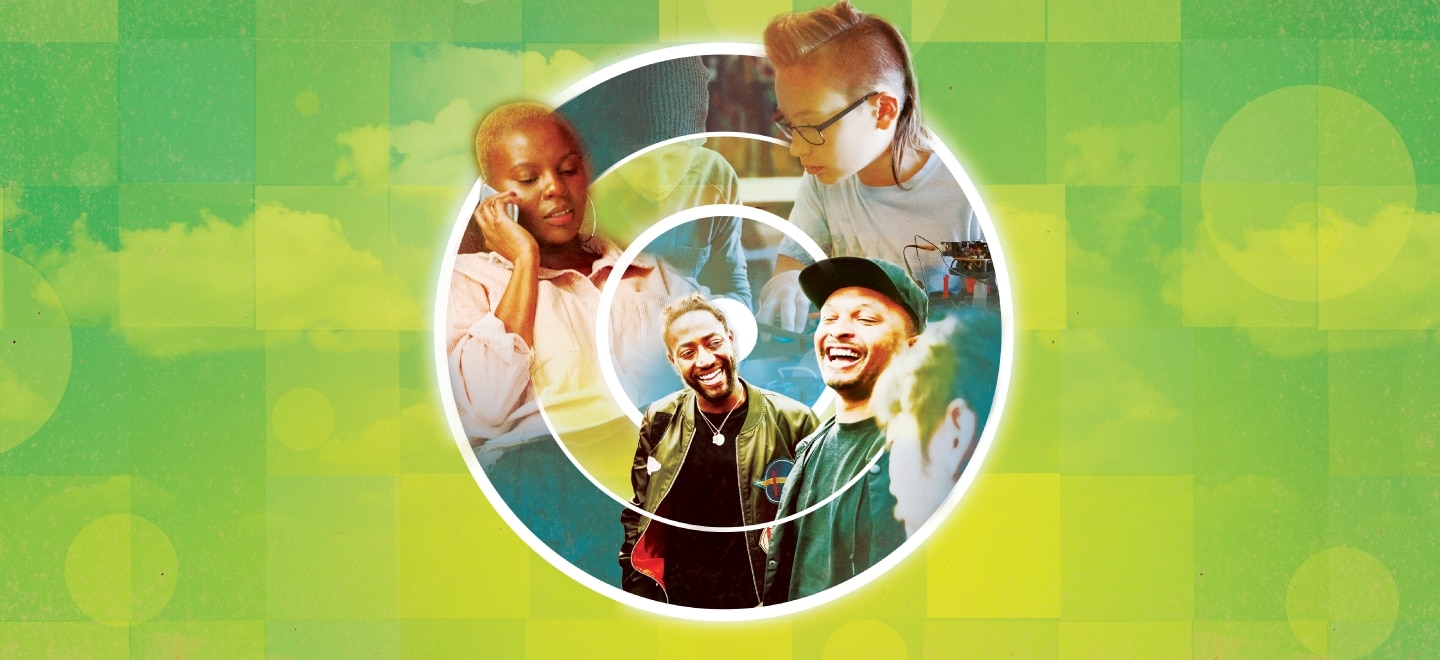
Valuing your most important asset—talent How to account for all people in the workforce experience
9 minute read
16 October 2019
 Diana O'Brien United States
Diana O'Brien United States Andy Main United States
Andy Main United States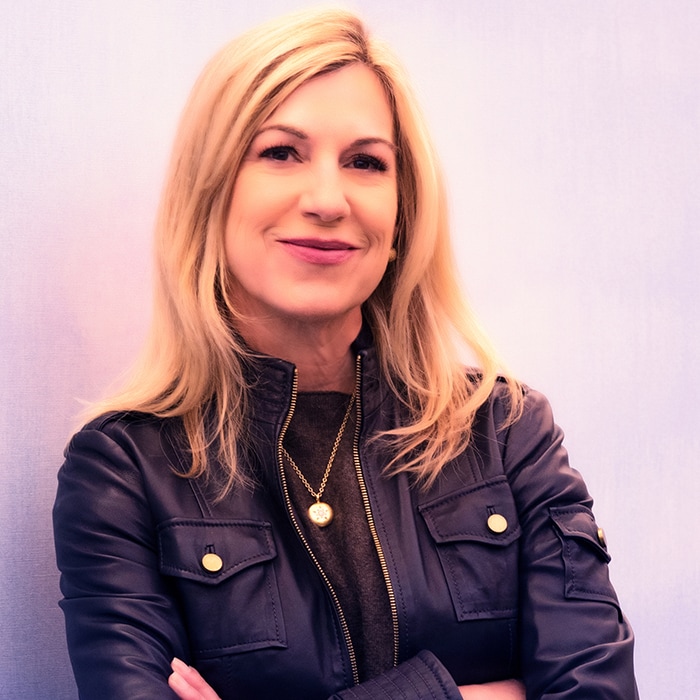 Suzanne Kounkel United States
Suzanne Kounkel United States Anthony R. Stephan United States
Anthony R. Stephan United States
Greater engagement with talent inspires and creates meaning, ultimately benefiting the customer, the workforce, and the bottom line. Find more ways to value your people, your most important asset.
In 1906, working with low-income families out of a small apartment in Rome, Maria Montessori opened the doors of Casa dei Bambini, or the “Children’s House.” This one-room classroom marked the first educational setting built on Montessori’s philosophy to free a child’s potential and transform [them] into the world.1 It was here that she experimented and honed her hallmark curriculum and education model that, today, has evolved into an institution encompassing more than 20,000 Montessori schools worldwide.
Learn more
Explore 2020 Global Marketing Trends
Download the full report or create a custom PDF
Explore the Marketing & sales collection
Subscribe to receive related content from Deloitte Insights
Download the Deloitte Insights and Dow Jones app
Placing the child at the center of the design, Montessori realized early in her research that to advance a person’s capabilities, knowledge, accountability, and sense of self (the pillars of Montessori education), each student and their unique traits need to be accounted for and balanced with the Montessori values. Giving young people foundational capabilities, focusing on the individual experience, and cultivating deep human interactions can help successful students grow into high-functioning, empathetic citizens.
The Montessori model provides a useful mirror for companies to reflect on who they are to all humans across their ecosystem, especially their own people—their workforce. The connectedness of organizations and the reliance on networks and ecosystems is well established (see our fusion trend). In this world of organizational interdependence, boundaries become blurred, removing categories that segregate customers, workforces, and competitors.
A worker is no longer the average 9-to-5, lunch pail–carrying employee. Rather, an organization’s people are its talent, representing a diverse swathe of individuals including brand ambassadors, giggers, social influencers, and partners. These individuals reside both inside and outside the walls of the organization. And just like Montessori students, this diverse workforce requires an approach that nurtures the “entire person,” enabling them to evolve and develop new skills and relationships, while building loyalty toward brands and places of employment.
In this new world of talent, it is important for businesses to recognize that their collective workforces often comprise individuals from different backgrounds and diversities, who come with differing perspectives, experiences, and goals. Organizations that acknowledge and value each individual’s experience place the human at the center of what they do, aiming to create a sustained and connected experience for all their people. As marketing departments move in-house and transform to smaller, multi-disciplinary teams, it can be critical that they work to help ensure each person is nurtured and valued across the organization (see sidebar, “How in-house agencies can improve the talent experience”).
How in-house agencies can improve the talent experience
As we explained in our agility trend, agile processes, teams, and structures are a prerequisite for keeping up with the pace of change across the business landscape today. The need for transformation in marketing sparked a trend in which many brands are bringing the marketing agency “in-house” to be better positioned to react, participate, and predict where conversation and culture are heading in the marketplace. As the walls of the organization become more permeable, the importance of building trust and loyalty across partners and the workforce has risen up the ladder of priorities (see our trust trend for more).
To create an environment that values all people, bold leadership from within the marketing function should champion the human experience (see our human experience trend) and help ensure that the workforce is included.
Our global marketing talent trend explores how many marketing functions today are transforming organizations by serving in new capacities. The role of the marketing department is shifting as a result of greater customer participation (see our participation trend), new organizational structures to deliver marketing campaigns (see our agility trend), and a need to manage the human experience better. Many CMOs and marketers are stepping into the role of facilitators of the human experience to help ensure every person’s capabilities, experiences, and goals are accounted for across the organization.2
In this article, we present insights and strategies on the ways many leading brands are integrating the workforce experience into their talent approaches. We also discuss the implications of this trend for marketers and marketing departments who are thinking about adopting workforce-centric models.
Integrating the talent and customer experiences
Across the seven global marketing trends, we see a common theme—the human connection matters more than anything else. Successful organizations should account for all humans within their ecosystem (including the workforce) and align them with the organization’s purpose. Below are two examples that showcase how companies are helping ensure they deliver a world-class experience for their talent:
- The holistic human experience at Alexion: Alexion Pharmaceuticals recognizes the importance of the employee experience in achieving results for the brand. Identifying an “inherent, powerful connection between the experience of employees at Alexion and the experience of the patients [they] serve,” Alexion introduced a chief patient and employee experience officer. This new officer’s responsibility is to ensure Alexion’s work environment comprises talent who have access to the right capabilities, tools, and support to perform and maximize their collective impact.3 The officer combines the patient experience and customer insights with the human resource function to create interactions between Alexion’s workforce and patients. The company organizes direct, empathy-based exercises and training such as “sharing circles” to help employees connect with people living with rare diseases, opening opportunities for deeper, more empathy-driven solution designs, while helping Alexion’s people understand the meaning of its work.4
- Adobe’s HR disruptor: Adobe combined the role of chief human resource officer (CHRO) with the role of executive vice president of customer and employee experience (CEXO). Following a rallying cry of “disrupt or be disrupted,” Adobe’s CHRO/CEXO wears multiple hats, hyper-focuses on the customer-employee relationship, and concentrates on the overlap.5 In integrating the CHRO role with the CEXO, Adobe aimed to centralize its people-centered functions to account for humans both inside and outside of its decision-making.6
These two instances show how brands are applying tried-and-tested strategies from customer engagement to improve and create a diverse and deeper workforce experience. By leveraging insights to understand and account for each person, marketing departments can lead the entire organization in finding innovative ways to help ensure consistency in the talent experience.
How marketing can unlock the talent experience
Having understood how to engage customers beyond the walls of the organization, many marketers are embracing the challenge of creating deeper, more meaningful engagement with their people. Drawing on our research, we outline specific strategies that show how many companies are supporting the talent experience:
- Build a symbiotic workforce and customer experience. Your workforce can be your best ambassador. Being authentic to your workforce, leading with values, and supporting collaboration across the organization strengthens the human experience for all people and helps provide an environment in which your workforce can thrive. Take the example of Qualtrics and Volkswagen (VW) Australia, which teamed up to develop a unique platform for the automobile maker to leverage customer experience data overlaid with employee experience data. Using Qualtrics’ systems, which leverage AI and customer data, VW Australia can explore opportunities to improve engagement with its workforce and drive the talent experience. VW Australia dealers rely on superior customer service to drive sales. By using both customer and workforce experience data, VW Australia uncovered an opportunity to invest in upgrading its dealer facilities. As a result, VW Australia is currently experiencing sustained sales growth and holds the highest retention rates and workforce experience scores in the company’s history.7
- Value personal interaction. In the new world of work, it can be difficult to evoke loyalty in the workforce, with more than half of all workers thinking about leaving their jobs, according to a recent Deloitte report on talent in the workforce.8 Retaining people typically requires building real relationships. Companies often design tech-enabled sensing and monitoring systems to track and gather feedback on the talent experience. However, the challenge is to identify the appropriate time to implement and use feedback rapidly.
Pulsing surveys sense how and whether the workforce is having a good experience and if they might leave the company. Making these surveys a routine practice can enable real-time course correction if a person is contemplating changing jobs. Unlock the value of data to understand how and whether people are fulfilled in their work, but do not lose touch with the value of personal interaction. Many workers especially value opportunities to build relationships with each other and with leadership. Find time to meet face to face and use pulsing survey data to assess how a person is feeling in the moment to share positive stories, praise, and mitigate challenges. - Go beyond the four walls. The marketing function and the CMO already serve as brand ambassadors for customers. In the new world of work, it can be increasingly difficult to uphold values (see our human experience trend) and understand who aligns with your purpose outside of your walls. Similarly, what it means to be part of the workforce is changing dramatically, making it even more important for companies to have oversight of every person’s “talent experience.”
Approaches such as those adopted by Alexion and Adobe to integrate roles and provide oversight beyond what the human resource manager has can help ensure consistency in the talent experience while upholding values beyond the organization. For instance, a large financial services institution recognized a need for blended roles to account for the dynamic world in which it operates. By analyzing internal interviews with integrated marketing-and-communications leaders and external market research on the future of work, four new marketing roles emerged for consideration—macro-trends spotter, sponsorships and partnerships curator, chief storyteller, and consumer anthropologist. The goal of these roles is to bridge gaps and better account for the collective customer, workforce, and partner experience. - Recognize the trust dividend. Just as a brand considers with whom it should partner, talent evaluates for whom they work and how long they stay with a company. Companies are getting smarter at leveraging the troves of workforce data at their disposal to understand the talent experience, but they should also be smart about maintaining transparency with their workforce, what metrics they track, and how they use the findings. Using data responsibly can help improve the overall talent experience while translating into deeper loyalty between the workforce and the organization. Google, Amazon, and Intel, which frequently notch the highest rankings for the best places to work in tech, leverage routine pulsing surveys and use data to improve the overall workforce experience. Communicating in an open, transparent manner, these companies share what data they collect, what they do with it, and how the data leads to improvements for the workforce.9
Accounting for all humans
As the walls of the organization continue to expand, the need for new roles is increasing. To help ensure and meet the demands of a growing and changing workforce, the marketing function (along with the CMO) can serve as a leader, convener, and facilitator to build a culture and space that supports each individual worker by accounting for their capabilities, experiences, and goals—gaining loyalty in the process.
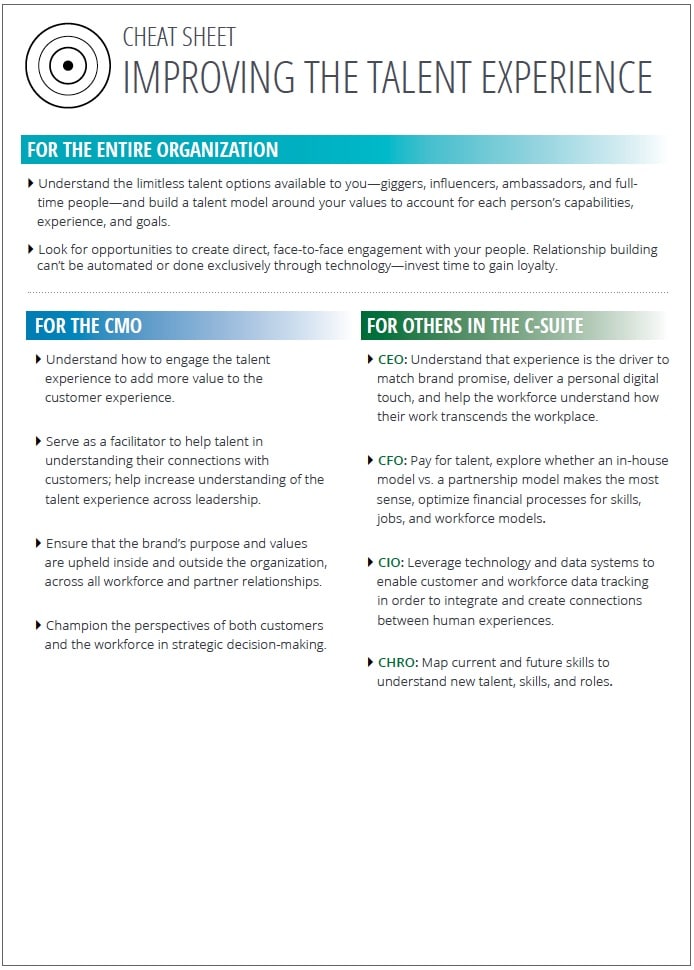
© 2021. See Terms of Use for more information.
Explore the collection
-
The amplification of consumer participation Article5 years ago
-
Purpose is everything Article5 years ago
-
Valuing your most important asset—talent Article5 years ago
-
Are you a trust buster or builder? Article5 years ago
-
2020 Global Marketing Trends Collection
